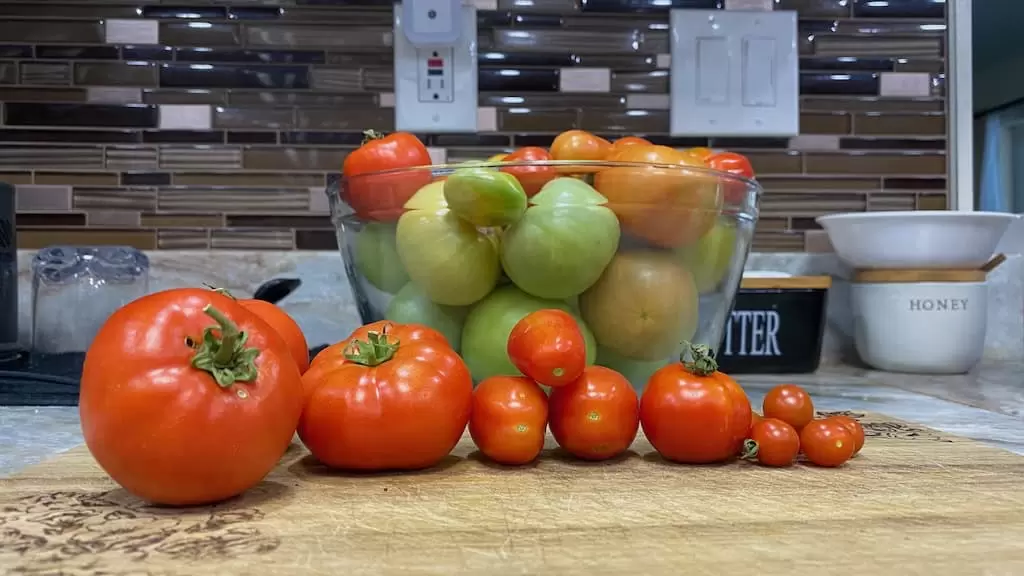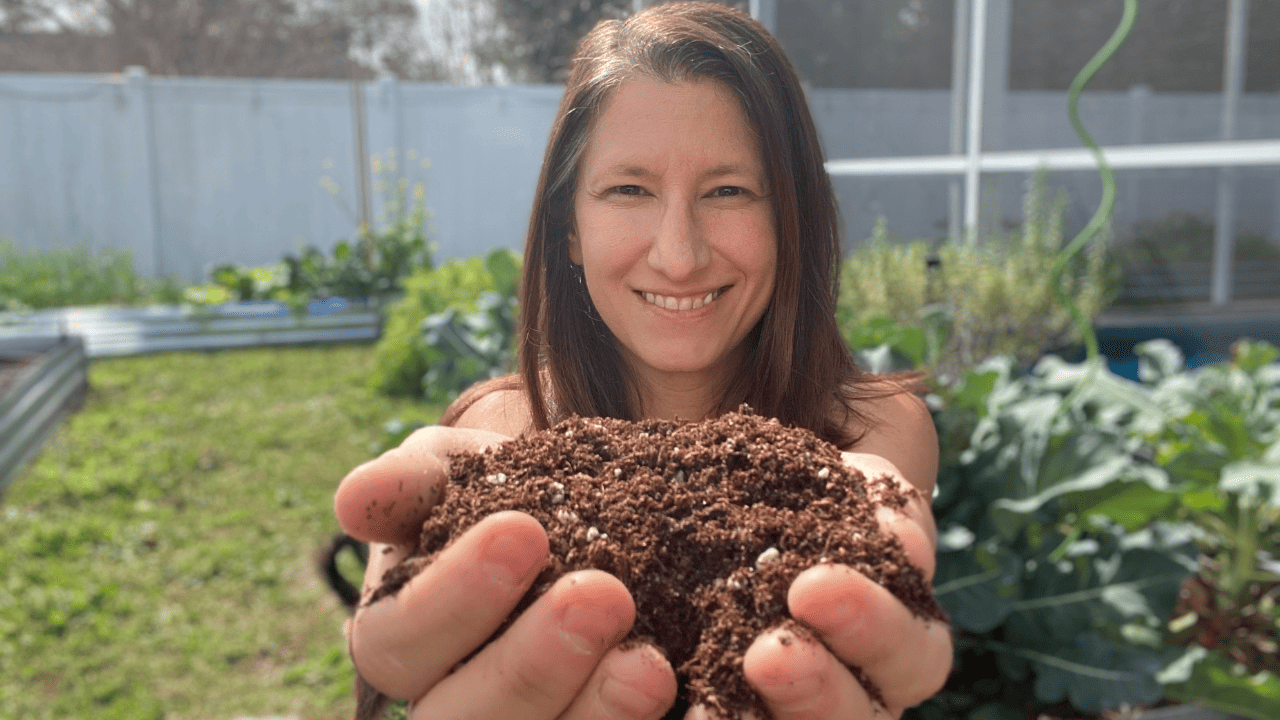Last Updated on October 3, 2024 by Homegrown Florida
Ever wondered about the best way to grow your veggies? In this intriguing experiment, we’re comparing the results of container gardening and raised bed gardening. Prepare for unexpected insights that might just change your gardening approach.
Setting Up the Experiment
I initially had certain expectations for this experiment, and boy, did it surprise me! Before diving into the results, let’s discuss how I set up both the container garden and the raised bed.
Planting and Transplanting
Started with two Homestead 24 tomato plants, initially nurtured in my AeroGarden, then transplanted into five-inch pots. Both started late January and transplanted by late February.
Soil and Watering Differences
- Raised Beds: Composted wood mulch, sticks, leaves, grass clippings, and food scraps. Watered automatically twice a week from well water.
- Container: High-quality organic soil mix from a bag, watered from a rainwater barrel every other day.

Observations and Differences
Let’s take a closer look at the two tomato plants:
Raised Bed Plant
- Appearance: Very green, bushy, with a multitude of tomatoes.
- Challenges: Required additional support due to size. Faced bug damage, but ongoing flower production.
Container Plant
- Appearance: Shorter, spindly growth, less vibrant leaves, and only three tomatoes.
- Challenges: Struggled with nutrient issues but remained bug-free. Ceased flower production.
Fertilizer Needs and Nutrient Issues
Raised Beds:
- Top-dressed once halfway through the season.
- Limited nutrient issues.
Container:
- Faced significant nutrient issues, evident in leaf veining and color.
- Required regular applications of fish fertilizer, showing slow improvement.

Watering and Soil Differences
Container Challenges:
- Dried out quickly, needing water every other day.
- Dark color absorbed heat, impacting root health.
Key Takeaways and Insights
- Building Soil in Containers: Contrary to prior belief, building healthy soil isn’t exclusive to raised beds. Using homemade compost, leaves, and grass clippings as mulch proved effective in containers.
- Container Size Matters: Opt for larger containers. Consider canvas grow bags for breathability and drainage.
- Container Color: Light-colored or insulated containers can reduce heat absorption, vital in warm climates.
Experiment Verdict
While the raised bed won in this specific experiment, the choice between container and raised bed gardening depends on your gardening goals.
- Container Gardening: Ideal for urban dwellers, beginners, or those with limited space. Offers convenience and manageable plant growth.
- Raised Beds: Provide a larger growing area, better root development, and potential for higher yields.
Regardless of your choice, growing your own food is a rewarding experience, promoting healthier living. Happy gardening!



